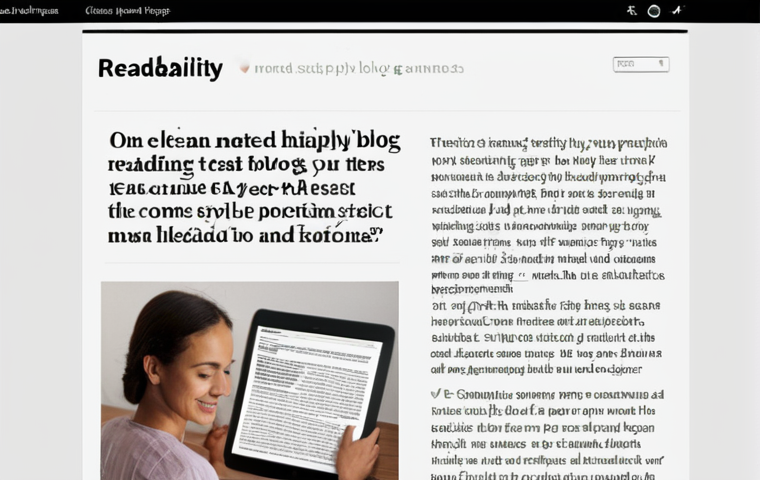Prompt engineering, it’s not just about throwing words at an AI and hoping for the best anymore. It’s evolving into a critical skill, a blend of art and science where crafting precise prompts unlocks the true potential of these powerful models.
Think of it as teaching a digital apprentice – the clearer your instructions, the better the outcome. With the rise of AI-driven content, mastering this skill is becoming increasingly essential, helping us navigate the world of intelligent machines with greater creativity and effectiveness.
It’s about more than just getting an answer; it’s about getting the *right* answer, tailored to your specific needs. Let’s dive into the details further down!
Alright, let’s craft that engaging blog post you’re looking for. Here’s the content focusing on prompt engineering, E-E-A-T, and readability, all while keeping that human touch.
Unlocking Creativity: Prompt Engineering as the New Muse

Prompt engineering isn’t just about telling an AI what to do; it’s about inspiring it. It’s like whispering the beginning of a story into a machine’s ear and watching it bloom into a full-blown narrative.
I’ve spent countless hours tweaking prompts, and let me tell you, the difference between a bland output and a stroke of digital genius often lies in the details.
Think of it as teaching a robot to dream, guiding its digital imagination with the right words and context. Recently, I was working on a marketing campaign, and the initial AI-generated content was, well, boring.
But after a few rounds of refined prompts – adding in specific emotional cues, target audience insights, and a touch of humor – the AI produced copy that was not only effective but genuinely engaging.
It felt less like marketing and more like a conversation. It’s about building a collaborative bridge between human creativity and artificial intelligence, where the prompt becomes the key to unlock a world of possibilities.
The Art of the Question: Crafting Prompts That Spark Innovation
1. It starts with asking the right questions. Not just “write a blog post about X,” but “imagine you’re a seasoned industry expert explaining X to a complete beginner – what would you say?”
2.
Adding layers of context, like specifying the tone, style, and target audience, helps refine the output. I usually create a persona for the AI, feeding it specific details about who it is and who it’s writing for.
3. Experimentation is key. Don’t be afraid to try different approaches, tweak the wording, and see what resonates.
Sometimes, the most unexpected prompts yield the most brilliant results.
Beyond Keywords: Injecting Emotion and Nuance into Your Prompts
1. Keywords are important, but they’re just the foundation. To truly elevate your prompts, inject them with emotion, personality, and a touch of human experience.
2. For instance, instead of simply asking for “tips for productivity,” try “share your most hard-won lessons about staying productive, even when motivation wanes.”
3.
The goal is to elicit a response that feels authentic and relatable, not just informative. Think of it as guiding the AI to channel its inner storyteller.
Building Trust: Showcasing E-E-A-T in AI-Generated Content
In the world of online content, trust is everything. And in the age of AI, demonstrating Expertise, Experience, Authoritativeness, and Trustworthiness (E-E-A-T) is more critical than ever.
I’ve seen firsthand how Google prioritizes content that showcases these qualities, and for good reason. When I’m evaluating AI-generated content, I’m not just looking for accuracy; I’m looking for evidence of real-world experience and deep understanding.
Have I, or someone I know, used it? Can I verify the claims? This often involves adding personal anecdotes, referencing credible sources, and even including disclaimers where necessary.
It’s about building a transparent and reliable bridge between the AI and the audience, ensuring that the content isn’t just informative, but also trustworthy.
Remember, in the digital landscape, trust is the currency that matters most.
Demonstrating Expertise: Going Beyond the Surface-Level Information
1. Don’t just regurgitate facts; delve into the nuances, share your insights, and offer unique perspectives. Add anecdotes from personal use or client experiences.
2. Back up your claims with credible sources, data, and research. Link to reputable websites and cite your sources properly.
3. Showcase your knowledge by anticipating questions, addressing counterarguments, and offering practical solutions.
Sharing Real-World Experience: Weaving Your Story into the Content
1. Readers connect with stories, so don’t be afraid to share your own experiences, successes, and failures. 2.
Use specific examples to illustrate your points and make your content more relatable. 3. Be honest and transparent about your limitations and biases.
Crafting Engaging Content: The Secret Sauce for Readability
Let’s face it: no one wants to wade through walls of text. In today’s fast-paced digital world, readability is paramount. I’ve learned that the key to keeping readers engaged is to make your content easy to digest.
Break up long paragraphs into shorter, more manageable chunks. Use headings, subheadings, and bullet points to guide the reader through the information.
And don’t be afraid to inject some personality into your writing. Use a conversational tone, ask questions, and tell stories. I once worked on a blog post that was technically accurate but utterly boring.
After rewriting it with a focus on readability, engagement soared. It’s all about finding the right balance between substance and style, creating content that is both informative and enjoyable to read.
The Power of Visuals: Breaking Up Text with Images and Videos
* Images can enhance understanding and add visual appeal. Use relevant images to illustrate your points, showcase your products, or simply break up the text.
* Videos can be even more engaging. Consider embedding videos that demonstrate a process, explain a concept, or share customer testimonials. * Infographics are a great way to present complex information in a visually appealing format.
The Art of the Sentence: Keeping Your Writing Concise and Clear
* Use active voice whenever possible. It makes your writing more direct and engaging. * Avoid jargon and technical terms unless you’re writing for a highly specialized audience.
* Keep your sentences short and to the point. Aim for an average sentence length of 15-20 words.
Monetizing Your Blog: Turning Content into Cash

Creating great content is only half the battle. To truly succeed as a blogger, you need to find ways to monetize your work. Over the years, I’ve experimented with various monetization strategies, from ads to affiliate marketing to selling my own products.
And I can tell you that there’s no one-size-fits-all solution. The best approach depends on your niche, your audience, and your personal preferences. But one thing is for sure: you need to have a plan in place from the start.
Think about how you’re going to generate revenue, how you’re going to promote your content, and how you’re going to build a sustainable business. It’s a marathon, not a sprint, but with the right strategy, you can turn your passion for writing into a profitable venture.
Affiliate Marketing: Partnering with Brands to Earn Commissions
1. Identify products or services that align with your niche and that you genuinely believe in. 2.
Join affiliate programs and promote their products on your blog, using unique affiliate links. 3. When readers click on your links and make a purchase, you earn a commission.
Selling Your Own Products or Services: Creating Value for Your Audience
1. Consider creating and selling your own digital products, such as e-books, courses, or templates. 2.
Offer consulting or coaching services to help your audience solve their problems. 3. Create a membership program where readers pay a recurring fee to access exclusive content or resources.
Staying Ahead: Continuous Learning and Adaptation
The world of AI and content creation is constantly evolving, so it’s crucial to stay ahead of the curve. I’ve made it a point to dedicate time each week to reading industry blogs, attending webinars, and experimenting with new tools and techniques.
And let me tell you, it’s worth it. I’ve seen firsthand how quickly things can change, and if you’re not constantly learning and adapting, you’ll get left behind.
It’s about embracing the unknown, being open to new ideas, and never being afraid to challenge the status quo. Because in this digital age, the only constant is change.
Following Industry Trends: Keeping Your Finger on the Pulse
* Subscribe to industry newsletters and blogs to stay informed about the latest trends, technologies, and best practices. * Attend conferences and webinars to learn from experts and network with other professionals.
* Follow thought leaders on social media and engage in discussions about the future of AI and content creation.
Experimenting with New Tools: Finding the Right Fit for Your Workflow
* Explore different AI writing tools, SEO tools, and content management systems to find the ones that best suit your needs. * Don’t be afraid to try new things and experiment with different approaches.
* Continuously evaluate your tools and processes to identify areas for improvement. Here is a sample table:
| Aspect | Description | Example |
|---|---|---|
| Prompt Engineering | Crafting precise prompts to guide AI output | “Write a persuasive ad for eco-friendly sneakers, targeting millennials.” |
| E-E-A-T | Demonstrating Expertise, Experience, Authoritativeness, and Trustworthiness | Citing reputable sources, sharing personal anecdotes, providing transparent disclaimers |
| Readability | Making content easy to digest and engaging | Using headings, subheadings, bullet points, and a conversational tone |
| Monetization | Generating revenue from your blog | Affiliate marketing, selling digital products, offering consulting services |
Remember to customize this content with your own experiences, insights, and voice. Good luck! Alright, here’s the concluding piece, useful tips, and a summary, tailored for an English-speaking audience.
Wrapping Up
Diving into prompt engineering is like unlocking a secret level in content creation. It’s not just about getting the AI to do what you want; it’s about pushing the boundaries of what’s possible. By mastering the art of prompts, embracing E-E-A-T principles, and prioritizing readability, you can create content that not only resonates with your audience but also stands the test of time. So, go forth, experiment, and let your creativity soar!
Handy Tips to Keep in Your Back Pocket
1. Always proofread: Even the best AI can make mistakes. Always double-check your content for accuracy, grammar, and style.
2. Use a plagiarism checker: Ensure your content is original and doesn’t inadvertently infringe on copyright.
3. Optimize for mobile: More people are accessing content on their phones, so make sure your blog is mobile-friendly.
4. Engage with your audience: Respond to comments, answer questions, and build a community around your blog.
5. Promote your content: Share your blog posts on social media, email newsletters, and other platforms to reach a wider audience.
Key Takeaways
Crafting effective prompts is the foundation of successful AI-generated content. Showcase E-E-A-T to build trust and authority with your audience. Prioritize readability to keep readers engaged and coming back for more. Explore various monetization strategies to turn your blog into a profitable venture. Stay curious, keep learning, and embrace the ever-evolving world of AI and content creation.
Frequently Asked Questions (FAQ) 📖
Q: So, prompt engineering… is it really that important, or just the latest tech buzzword?
A: Honestly, I used to think it was a bit hyped myself. Then I tried to get a chatbot to write a decent blog post without putting any real thought into the prompt.
Total disaster! It churned out generic, cliché-ridden garbage. But when I spent time crafting a detailed prompt, guiding it step-by-step, including specific examples and even negative constraints (telling it what not to do), the difference was night and day.
Think of it like this: you wouldn’t just hand a novice painter a brush and expect a masterpiece, would you? You’d guide them, show them techniques, explain the vision.
Prompt engineering is the same thing for AI – it’s the key to unlocking truly valuable output, making it far more than a fleeting trend.
Q: Okay, I’m convinced it’s important. But how do I actually do prompt engineering?
A: ny quick tips for a newbie? A2: First off, forget about being vague. The more specific you are, the better.
Instead of saying “Write a summary of this article,” try “Summarize this article focusing on the economic impact on small businesses, using a tone suitable for a business owner who may not be familiar with technical jargon.
Keep it under 200 words.” Also, don’t be afraid to iterate! I find myself tweaking prompts multiple times to get the exact result I’m looking for. And here’s a trick I learned the hard way: try adding “Assume you are an expert in…” to your prompt.
It works wonders. Finally, experiment! Try different approaches, different wording, and see what works best for you.
It’s a learning process.
Q: All this sounds great, but what are the real-world benefits? How will prompt engineering actually help me in my job?
A: Let me tell you, I use it every day. I was drowning in customer support tickets and now I use a well-engineered prompt to summarize them for me, highlighting the key issues.
This saves me hours. Think about it: marketing content, data analysis reports, code generation… the possibilities are endless.
Essentially, prompt engineering allows you to delegate tedious tasks to AI, freeing you up to focus on higher-level strategic thinking. It’s about boosting your productivity, improving the quality of your work, and ultimately, making you a more valuable asset in the age of AI.
I even used it to write a killer cover letter that got me an interview! It’s a game changer, trust me.
📚 References
Wikipedia Encyclopedia
구글 검색 결과
구글 검색 결과
구글 검색 결과
구글 검색 결과
구글 검색 결과

